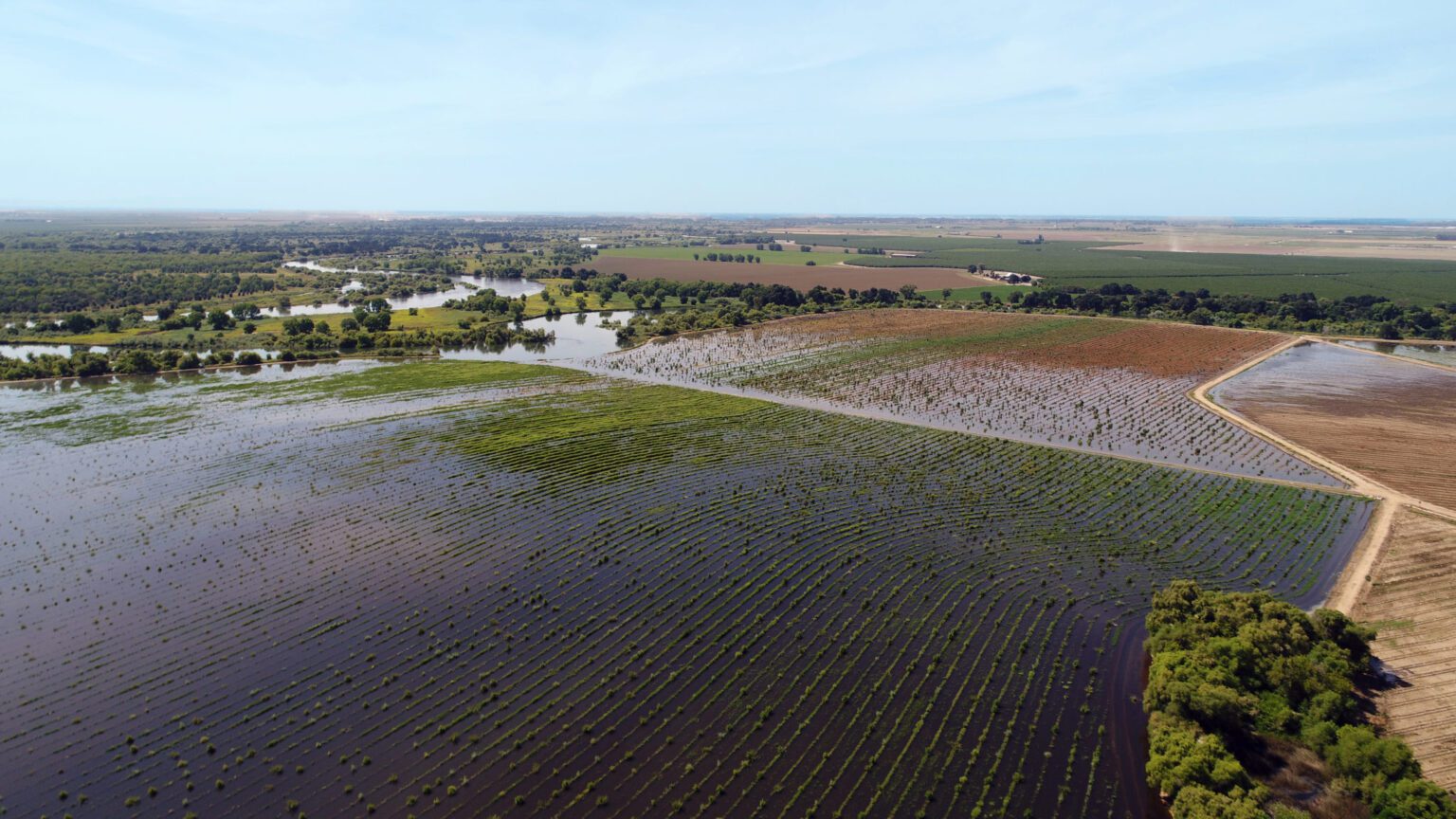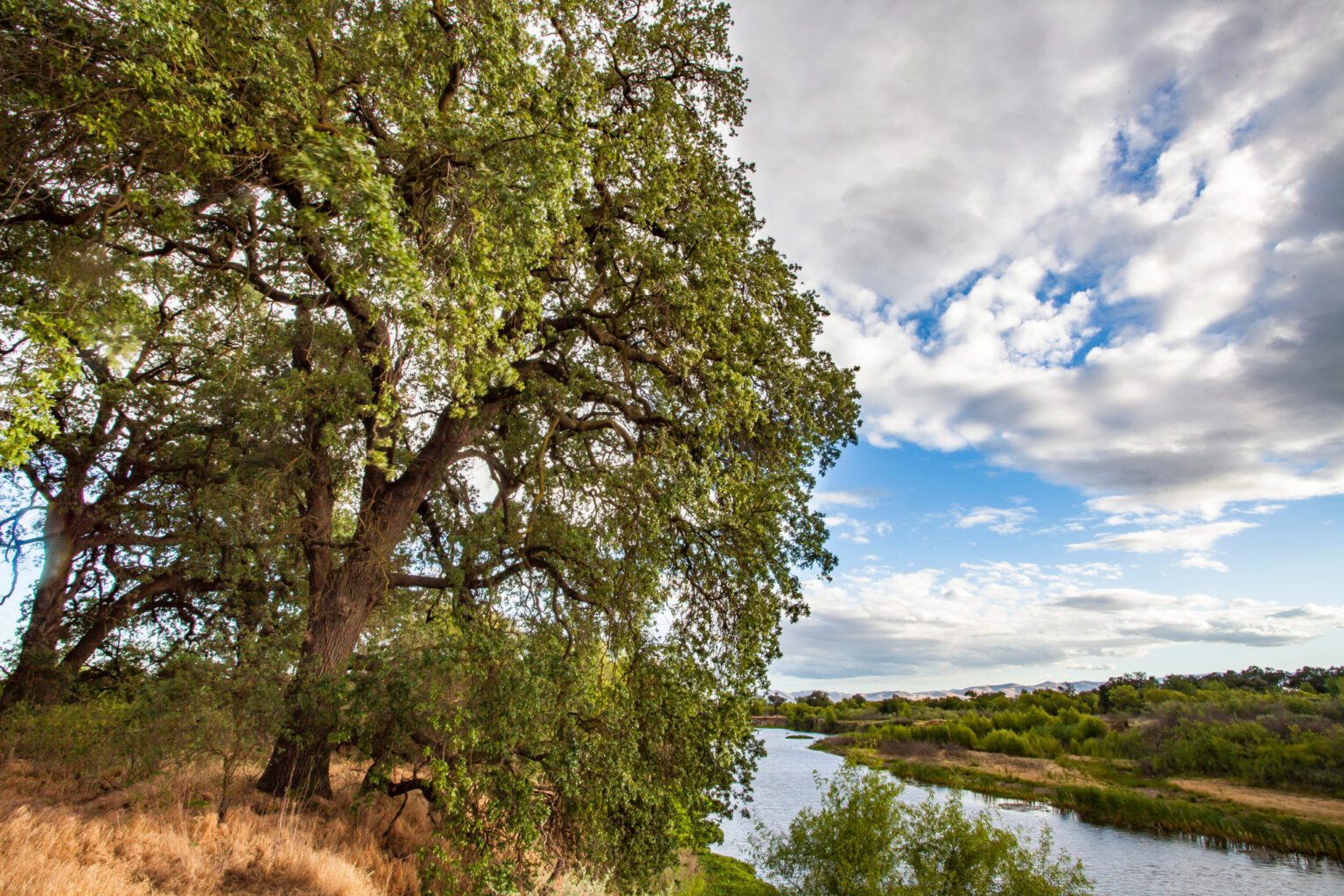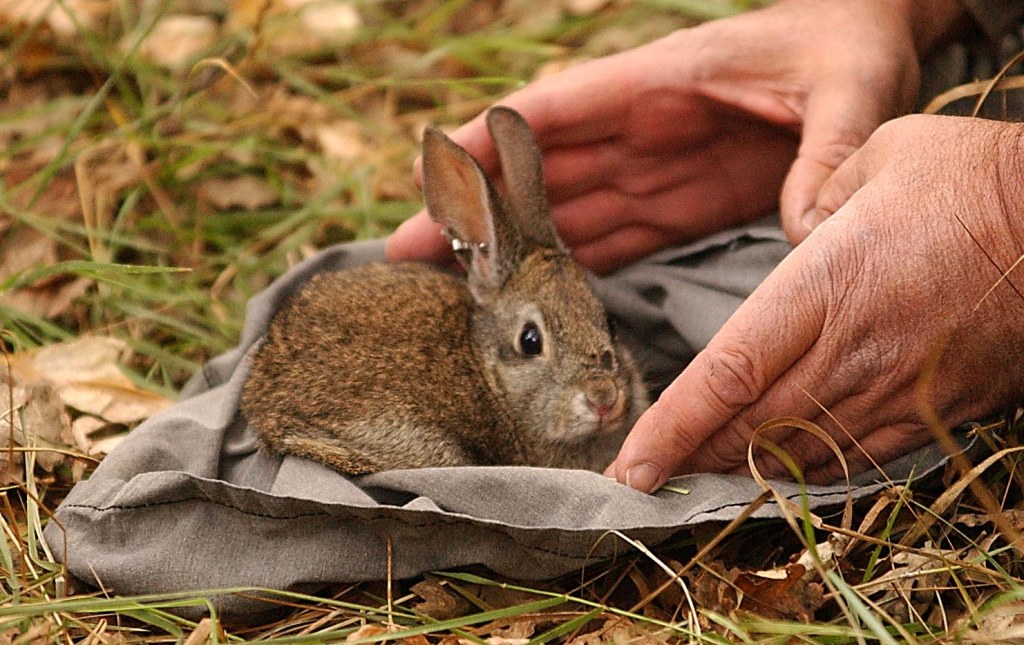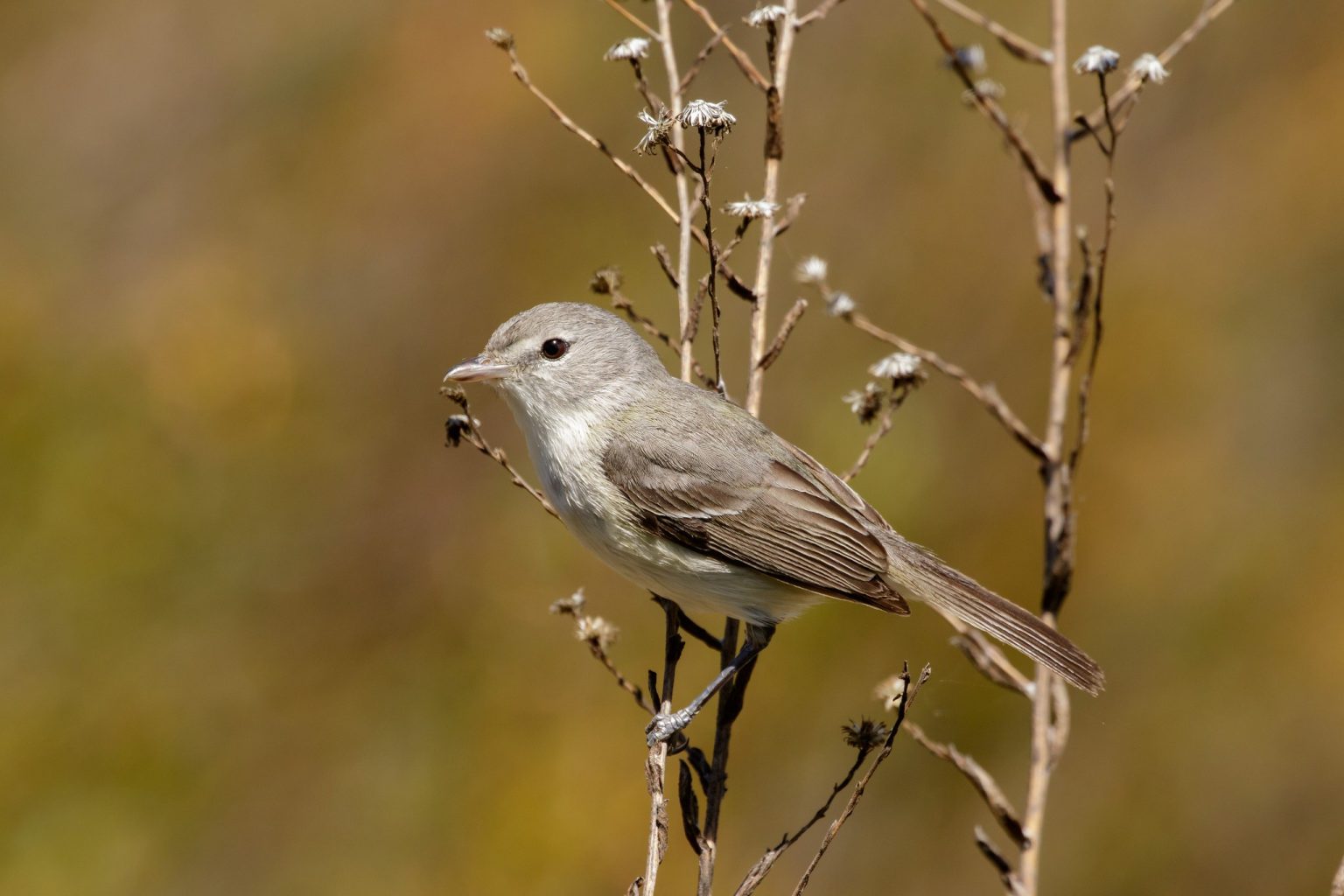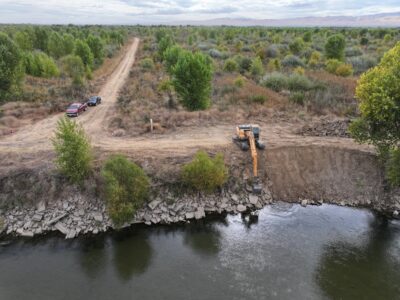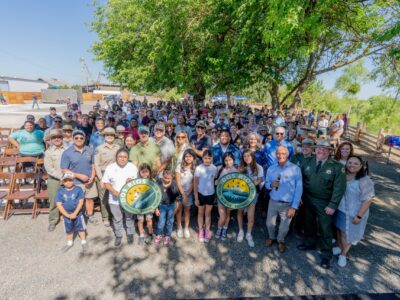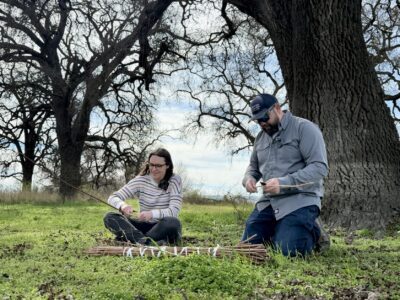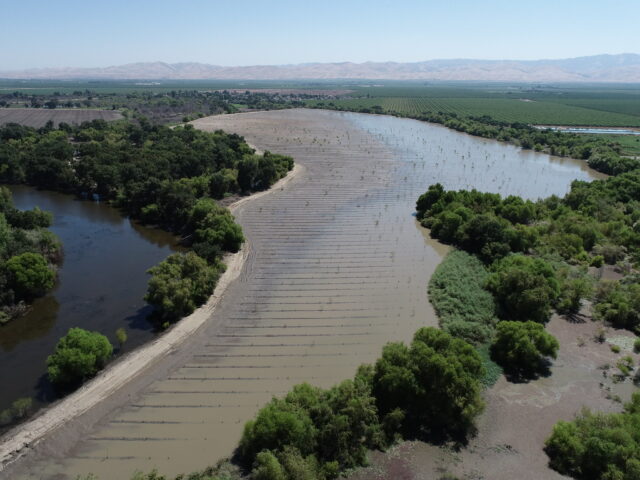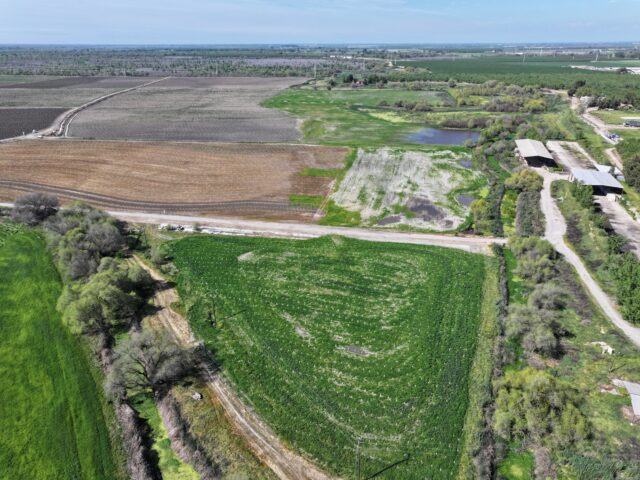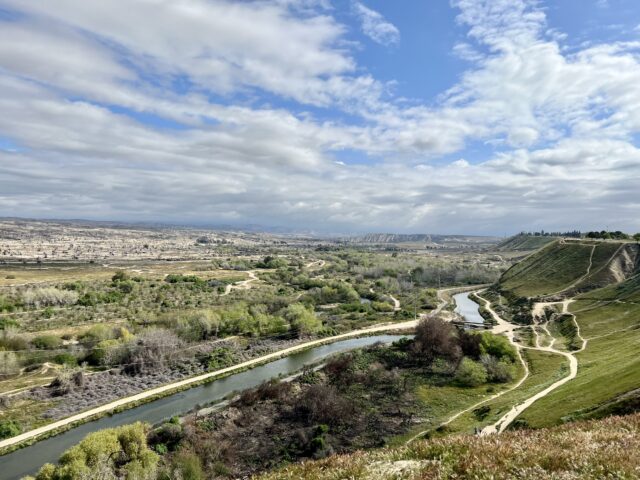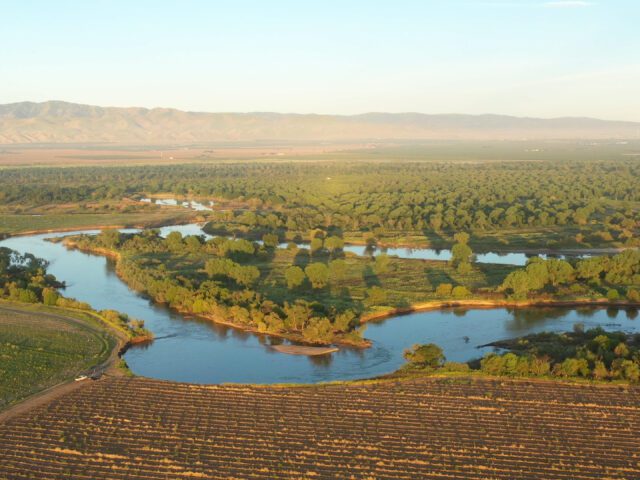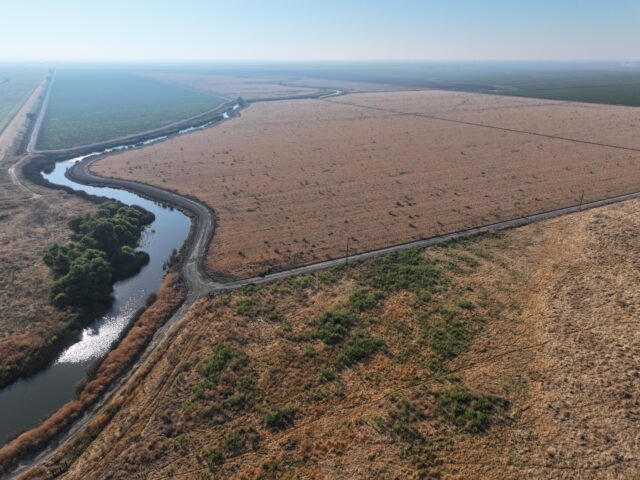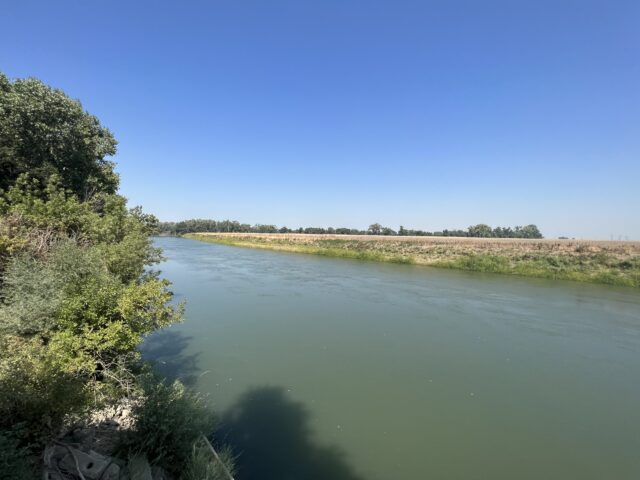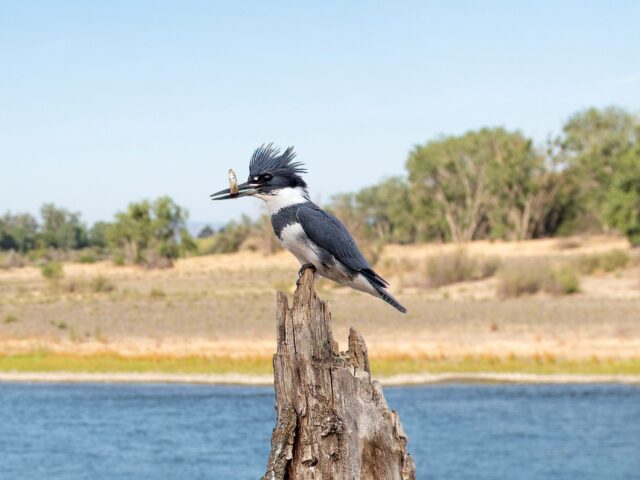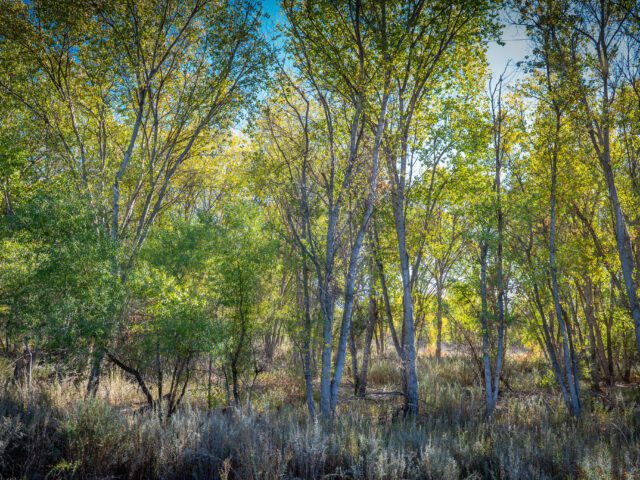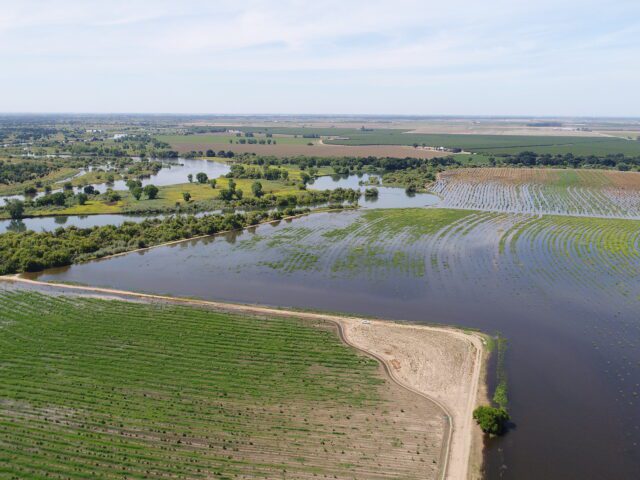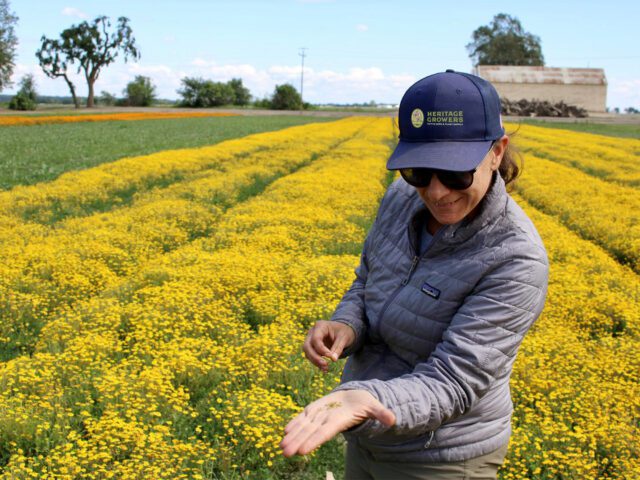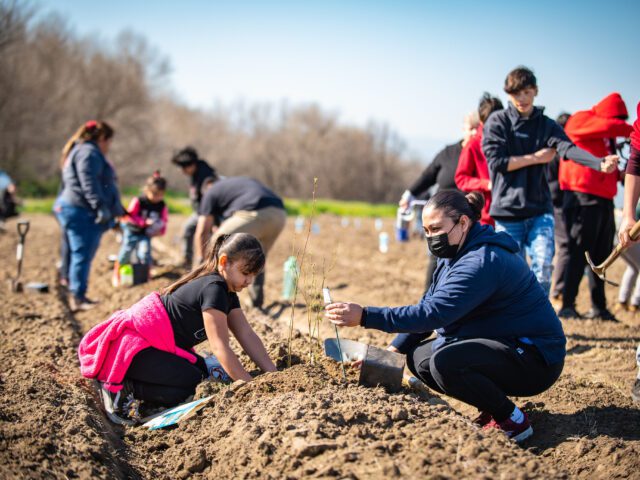Ten years and $40 million from eleven different funding sources converge at the confluence of the Tuolumne and San Joaquin Rivers. Here, we show the exceptional value of recovered floodplains in the Pacific Flyway, a global migration corridor for birds. We are restoring habitat for threatened and endangered wildlife that traverse the planet from Argentina to the Arctic. Habitat conservation here already has led to the de-listing of the Aleutian Cackling Goose, a previously endangered migrating species.
Project Impact
2100 acres restored
280,000 trees planted
9 priority species protected
PLUS
7000 acre-feet of fresh water conserved, 8 miles of riverfront restored, 250 local jobs created, and $40,000,000 in competitive grants delivered to a severely disadvantaged community
About the Dos Rios Ranch Preserve
Based on years of learning by doing, River Partners is designing a habitat preserve that goes far beyond single-species or single-suite focus. We are actively balancing the habitat needs of the entire ecosystem, and using real-life lessons to guide our actions. The site provides large-scale provision for riparian brush rabbit, riparian woodrat, Swainson’s hawk, Central Valley Chinook salmon, steelhead trout, least Bell’s vireo, yellow warbler, sandhill crane, and the entire suite of neo-tropical migratory songbirds.
Our pilot studies at Dos Rios document the growth benefits of floodplains for foraging for juvenile salmon, and we are in the process of building agency consensus around the design of a water control structure that will increase residence time for floodwaters to benefit foraging juveniles. We have installed wildlife monitoring cameras that have identified new occurrences of threatened and endangered species (riparian brush rabbit) which have guided the placement and configuration of habitat features for rabbits. With partner bird monitoring organizations, we have documented that the diversity of the breeding bird populations in restored habitats at Dos Rios is similar to that of mature forests after just two growing seasons.
Photos top to bottom, left to right:
- Flooded fields of native riparian vegetation at Dos Rios Ranch Preserve
- Heritage oak tree along the San Joaquin River
- Endangered Riparian Brush Rabbit
- Threatened Least Bell’s Vireo



